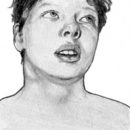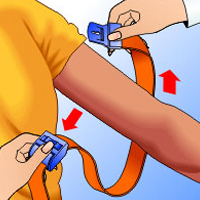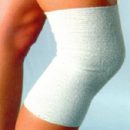Open brain injury is the injury of soft tissues of skulls with damage to muscle fibers and skull bones. This type of injury is dangerous to brain infection. When squeezing the brain, a liquid or rolled part of blood takes place.
Content
The concept of brain injury
Card-brain injury - mechanical skull injury causes composer with brain tissue, tension and offset of its layers, transient sharp increase in intracranial pressure. The brain displacement may be accompanied by a breakdown of brain tissue and vessels, brain injury. Usually these mechanical disorders are complemented by complex circulatory and biochemical changes in the brain.
Depending on whether the intake of the skin of the skull and its tightness is preserved during injury or they are broken, the cranial and brain injuries are divided into closed and open.
Basic manifestations of open brain injury
Open cranopy and brain injury includes injuries of soft tissue skulls with damage to a connective tissue aponeurosis (muscle fiber shell), not penetrating and penetrating injuries. With this form, injury is often observed fractures of the bones of the skull, which creates a danger of brain infection. Symptoms of open damage depends on the nature of the damage to the brain and stem structures.
Together with the destruction of the skin, bones and shells matter the concussion and compression of the brain. The acute period lasts up to 3 days and is manifested by the development of a copor or coma, as well as impaired heart and lungs. The period of early reactions is characterized by an edema of the brain, mainly around the wound. Consciousness is gradually restored, but paralysis of hands and legs grow, speech and hearing. In this period, the development of meningitis or encephalitis is most often. After 4 weeks, the period of elimination of early complications begins. By 4 months, the wound heals, and the scar is formed that does not cause consequences.
Remote consequences of injury - this is the development of epileptic seizures and hydrocephalus (brain water).
Symptoms of brain compression
 The brain compression is characterized by a vital increase in a different period of time after injury or immediately after it is generalized symptoms. The compression of the brain is characterized by a volumetric accumulation of liquid or curved blood, spinal fluid or air under the shells. This causes a local and general compression of a substance with a displacement of the middle structures of the brain, deformation and compression of its individual elements.
The brain compression is characterized by a vital increase in a different period of time after injury or immediately after it is generalized symptoms. The compression of the brain is characterized by a volumetric accumulation of liquid or curved blood, spinal fluid or air under the shells. This causes a local and general compression of a substance with a displacement of the middle structures of the brain, deformation and compression of its individual elements.
Head compression is a special kind of injury resulting from a consistent effect of dynamic (short-term) or static (long) mechanical load.
The brain compression is characterized by damage to the soft covers of the head, skull and brain. More accurate is the term «Long scalp» (minutes, hours, day) in contrast to the less significant short-term head compression (seconds).
Long-term headset occurs in victims due to earthquakes, explosions and collars in mines and mines. For an adequate and unambiguous assessment of the forms of cranial and brain injuries, it is necessary to correctly qualify violations of consciousness.
4 grades of consciousness states are isolated:
- Clear consciousness with the preservation of all mental functions, full orientation in place and time and adequate reactions
- Stunning - the oppression of consciousness while preserving limited verbal contact against the background of increasing the threshold of perception of external stimuli and reduce their own mental and motor activity
- Soporn - deep inhibition of consciousness, which is manifested by drowsiness while maintaining coordinated protective reactions to pain, opening an eye on a sharp sound or pain, safety of life functions or a moderate change by one of the parameters
- Coma is characterized by turning off the consciousness with the full loss of the perception of the world and himself









